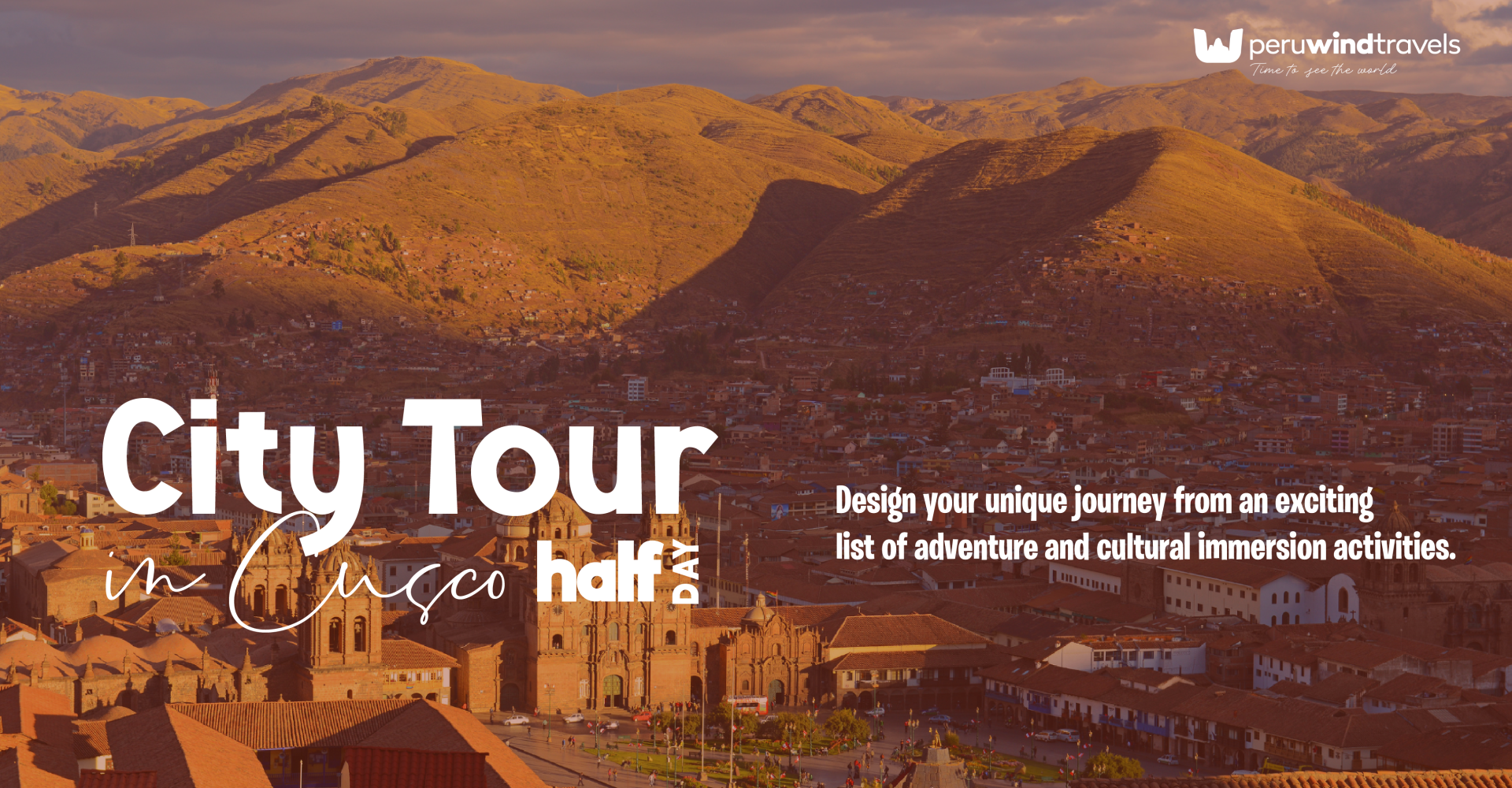
The city of Cusco, the ancient capital of the Inca Empire, was declared a World Heritage Site by UNESCO in 1983, and is one of the most important destinations in Peru and all of South America. This legendary city is known worldwide for the large number of archaeological remains left by the Inca culture, and is the gateway to one of the most majestic archaeological sites in the entire continent, “The impressive citadel of Machu Picchu.”
- English-speaking professional guide.
- Professional driver
Transportation. - Pickup from Hotel in Cusco with group and private service (return to hotel included with private service only / group service ends Plaza de Armas).
- Excluded.
- Tips.
- Entrance fees: you must buy the Tourist Ticket at the first site you enter (130 peruvian soles per person; valid for 10 days and allows you to enter 16 different sites around Cusco and the Sacred Valley or the 1-day Tourist Ticket mainly for Cusco sites only.
- The Cathedral (40 peruvian soles per person)
Qoricancha (20 peruvian soles per person)
- Clothing: long pants, convertibles or shorts, long and short sleeved shirts or t-shirts, cotton socks. Warm clothing for high altitude areas (Arequipa – Colca, Puno, Cusco), especially for the night, including sweaters/fleeces and a jacket.
- Rain gear or poncho (you can buy a basic one in Cusco), especially if you visit in the months of November to April.
- Comfortable footwear, we recommend hiking boots.
- Camera, films.
- Hat or cap to protect you from the sun, cold and rain.
- Sunscreen (high factor) and Sunglasses.
- Insect repellent: a minimum of 20% DEET is recommended; no risk of malaria has been reported.
- Toiletries and personal medications.
- Original passport and photocopies of passport.
DETAILED ITINERARY
The Cathedral
The cathedral in Cusco was built in 1539, and later between the years 1560 and 1664 a new cathedral was constructed. It was designed in the shape of a Latin cross. The façade is in the Renaissance style contrasting with the Baroque and Plateresque. The Cathedral is also famous for its splendid interior with colonial-style goldsmith’s work, woodcarving and a valuable collection of canvases in the style of the so-called Cusqueña School.
Koricancha and the Convent of Santo Domingo
The extraordinarily crafted Temple of the Sun at Koricancha (Koricancha means “courtyard of gold” in Quechua) was the most sumptuous temple in the Incan Empire. In addition to hundreds of gold panels lining its walls, there were life-sized gold figures and solid gold altars. The mummies of the Incan nobles were kept here and used during the religious ceremonies. After the Spaniards looted the temple and emptied it of gold, the exquisite polished stonewalls were used as the foundations of the Dominican Convent of Santo Domingo, but some parts of the original temple still remain today.
Sacsayhuaman
The Sacsayhuaman complex is located on a steep hill above. For many years it was considered to be a fortress. However, modern researchers hypothesize that it was part-residence to the wealthy nobility, and part-temple for religious ceremonies. Although the Spanish demolished the buildings, the remains of this place are still impressive! The grounds surrounding Sacsayhuaman are still used today for the colorful festival of Inti Raymi which is held on the 24th of June every year.
Qenqo
Qenqo is a strange Incan temple carved out of huge stone. Q’enko comes from the Quechua language and means “Labyrinth.” There are carvings everywhere, although some are a little indistinct. There are many zigzag channels on top of the rock, probably used for pouring sacrificial chicha (a local wine made from maize). Inside the rock there are a number of caves, passageways, and an altar.
Pukapukara
Puka Pukara translates to “the red fortress.” This is a small site and although the name suggests it was a fortress, it does not appear to have any defensive purpose.
Tambomachay
Tambomachay in Quechua means “place of rest.” This “water resort” in Incan times, was a sacred site used to worship the water deity, and had magnificent channels, aqueducts, and waterfalls.


